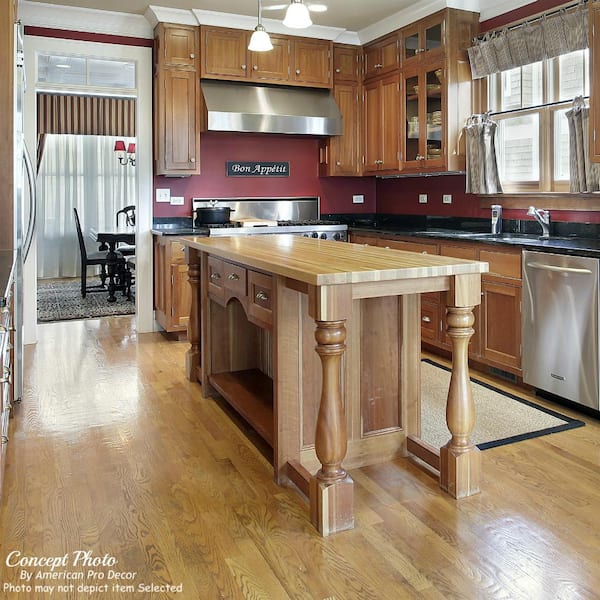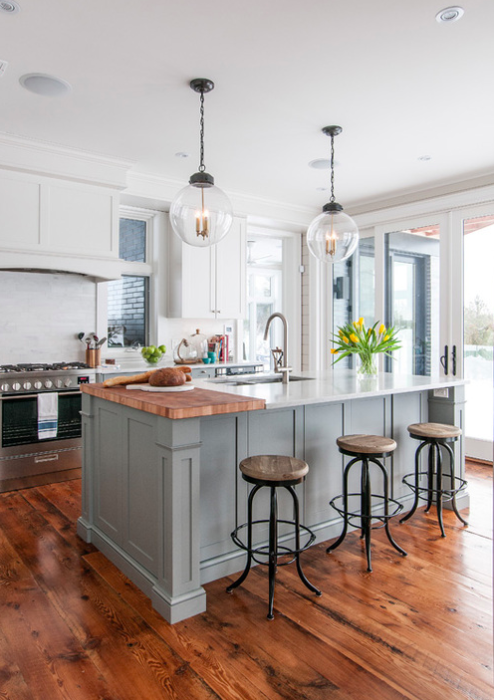Upgrade Your Kitchen with Trendy Kitchen Island Leg Solutions
Wiki Article
How to Pick the Perfect Kitchen Island Leg to Improve Your Kitchen Area Layout
Choosing the suitable kitchen area island leg is a nuanced process that calls for cautious consideration of various variables such as style material, design, and performance. A well-chosen leg can not only sustain the structure yet also offer as a defining component that improves the overall visual of your kitchen.Analyze Your Kitchen Area Style
When it pertains to selecting a cooking area island leg, it's necessary to examine your kitchen design to ensure a natural design. The cooking area is frequently the heart of the home, and the island works as a practical and visual focal factor. The choice of leg style need to reflect the total theme of your kitchen area, whether it be modern, typical, farmhouse, or industrial.As an example, in a contemporary cooking area, streamlined, straight legs in a minimalist layout may improve the structured appearance. Conversely, a rustic kitchen area may profit from heavy, turned legs that communicate heat and personality. Take into consideration delicately designed legs that echo conventional craftsmanship. if your kitchen area features a traditional decoration.
Pay interest to the proportions of both the island and the surrounding space; the leg's range need to enhance the general measurements. By aligning your leg choice with your cooking area's design, you develop a linked and welcoming atmosphere that shows your personal aesthetic.
Consider Product Options
Selecting the appropriate product for your kitchen area island leg is vital, as it influences both resilience and aesthetic allure. Various products supply distinctive benefits and can dramatically affect the total style of your kitchen area.Timber is a popular choice, known for its heat and adaptability. It can be discolored or painted to match your kitchen area's color pattern, offering a timeless look. It might call for more maintenance to protect against damage from dampness and warm.
Steel legs, such as stainless steel or wrought iron, stimulate a commercial and modern feeling. They are immune and exceptionally sturdy to damage, making them optimal for high-traffic areas. Steel can additionally be completed in various means, enabling customization in terms of structure and color.
One more option is composite materials, which integrate visual appeals with practicality. These can mimic the look of timber or steel while frequently being lighter and easier to keep.
Finally, think about stone legs, which can bring a glamorous touch however might require extra architectural support. Each product has its unique attributes, so it's necessary to select one that aligns with your kitchen area's general design vision while guaranteeing durability and capability.
Explore Layout Features
Countless style attributes can improve the performance and aesthetic allure of a kitchen island leg, making it an important component of the total kitchen area design. One crucial element to think about is the style of the leg, which can vary from standard turned layouts to streamlined, modern lines. The option of style ought to enhance the existing kitchen cabinetry and components, creating a natural appearance.Along with design, the surface of the leg can significantly affect the cooking area's aesthetic appeal. Alternatives such read this as repainted, stained, or natural surfaces can either highlight the leg as a declaration item or enable it to blend seamlessly into the kitchen environment. Decorative components, such as decorations or makings, can additionally add personality and originality, transforming this page a basic leg into a focal point.
Furthermore, including functional attributes like open shelving or integrated storage can boost energy while preserving aesthetic worth. The interplay of these layout includes not only elevates the kitchen island leg's look but likewise adds to the total performance of the kitchen area space. By thoughtfully selecting these aspects, homeowners can guarantee their cooking area island leg serves both ornamental and practical objectives.
Determine Size and Height

Generally, the conventional elevation for kitchen area island legs is around 30 inches, which aligns with the elevation of basic kitchen counters and dining surfaces. Nevertheless, if your island serves a dual purpose, such as a breakfast bar, you might think about a greater leg gauging 36 inches. This height advertises a much more informal eating experience and fits bar feceses comfortably
In regards to width, the leg must not just supply ample assistance but likewise keep aesthetic equilibrium. A size of 3 to 5 inches is typically suitable, enabling adequate stability without overpowering the overall style. In addition, take into consideration the spacing between the legs; they must be positioned to enable for simple motion and accessibility around the island.
Inevitably, taking precise dimensions and taking into consideration the intended use the kitchen island will direct you in picking the appropriate dimension and elevation of the legs, making certain both visual charm and useful capability in your cooking area layout. kitchen island leg.
Budgeting for Your Choice

Next, establish the style that aligns with your cooking area's aesthetic. Custom-made legs might come with a premium, while pre-fabricated options normally supply cost financial savings. It's important to stabilize your wanted visual with the functionalities of your budget plan.
Think about extra costs that might occur, such as installment or click this completing. If you're intending to hire an expert for installment, include these expenditures in your budget.
Finally, designate a contingency fund for unexpected expenses that might occur during the improvement. By very carefully assessing these factors, you can make educated decisions that not just enhance your kitchen's style however also keep your renovation within financial reach. A well-planned budget will certainly guarantee that you accomplish the desired appearance without jeopardizing your economic goals.
Conclusion
In conclusion, choosing the ideal kitchen island leg demands mindful factor to consider of various factors, including the general kitchen area style, product choices, layout attributes, and ideal dimensions. By lining up these elements with the preferred visual and functionality, a harmonious and visually enticing kitchen area island can be attained. Additionally, budgeting for the chosen products and setup will certainly guarantee that the option process stays possible and functional, inevitably enhancing the kitchen's style and functionality.When it comes to picking a cooking area island leg, it's vital to examine your cooking area design to ensure a cohesive design.Various style functions can improve the performance and visual allure of a cooking area island leg, making it an integral part of the overall kitchen design. The interplay of these design includes not only elevates the cooking area island leg's look yet additionally adds to the total capability of the cooking area room.Developing a budget plan for your kitchen area island leg is an important step that can substantially impact your overall kitchen remodelling costs.In verdict, picking the excellent cooking area island leg demands mindful factor to consider of various factors, consisting of the total cooking area style, material options, style attributes, and proper measurements.
Report this wiki page